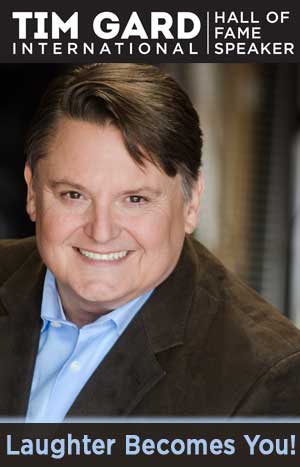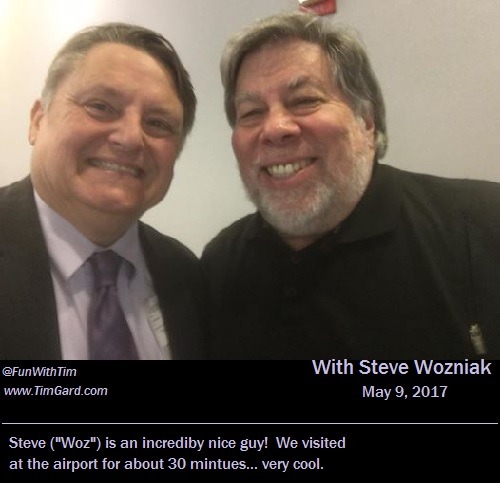Giving a keynote speech in front of groups of people is a task that some find easy and others, frightening. Regardless of your terror rating, public speaking is still a skill that (with work) can improve much like becoming a better leader or supervisor. After 20 years as a professional speaker, I’ve found that it does not matter if it’s a sales presentation, pep talk to the team, or addressing your peers at an office meeting some guidelines are constant.
Engage your audience with a memorable keynote.
Tina Malkuch is a friend of mine from Montana (USA) who has a 5th degree black belt in karate. It’s taken her 15 years of hard work, sacrifice, study, and dedication to achieve this distinction. I admire her accomplishment. In all the years I’ve known her, I’ve had several of our friends ask her if she can just teach them something “right now” that they can use to defend themselves. I’ve never overheard someone say to her, “I want to dedicate my life to this study just as you have.” It seems most people don’t want to do all the work she has done, they just want to invest a few minutes right now in the hopes they can use that information later if a threat occurs. Our audiences today are looking for the same thing. They want black belt level knowledge right now without having to spend years working to achieve the black belt themselves.
The amazing thing is that we can actually accomplish this concept for many of those who attend our keynote sessions. We may not be able to instantly teach them how to do nuclear welding, but we may be able to give them skills that cut their learning curve substantially, in any line of work or in life. The key is to prepare them to learn (I use humor here), limit the number of actual epiphanies we share with them, and then reinforce our message with vivid, relatable, real-life stories. Trainers have days—sometimes weeks to establish rapport, establish educational parameters, reinforce what they want you to learn, and show you how to actually use the knowledge. When we keynote, we often have an hour or less to accomplish a lot and as such, we have to modify our structure to adapt to the limited time frame.
Prepare your audience in the opening of your keynote.
The first words out of your mouth are critically important. People want to be surprised, entertained, and even challenged. Before you even start your keynote, many of them are asking themselves if this is going to be worth their time. I link the introduction to my opening comments to help accomplish this. In the intro the person will say, ”Tim promises not to have everyone holding hands or singing songs.” When I enter the stage, I tell a story about a presenter I once saw, who had everyone touch fingers with the person next to them and tell that other person something they always wanted to say but were afraid to say. I explain that when he did this about half of the audience got up and walked out on him. After the program, another keynote speaker asked me what I thought he had done wrong and I had to explain to him that the audience was comprised of truck drivers. A group not known for being open to touching each other, they reacted badly to him requesting them to do something they hated. My audience then laughs and we are off to a strong start. Keep in mind, people today, globally, are not looking for “Peter Pan” advice like “Don’t worry be happy”, they want and need tangible information that can help them personally or professionally.
Limit the knowledge points in your speech.
This is not rocket surgery for many of you, however many of us are driven to share as much as we can in the limited time we have together. We sometimes offer our audiences 52 ideas (like a deck of cards), invite them to select a card—any card—and make it their own. My suggestion is for you to look at your keynote program and see if you can synthesize your black belt level knowledge into a few points (no more than 3). Our audiences have a short attention span and more than 3 will often be lost on them. I endured a keynote program a few years ago by a well known American speaker who shared his 18 points of leadership with a group of over 1,000 people. Most were lost after the first 3 and dropped their interest. In my mind, I was pointing an imaginary remote control at him and attempting to fast forward to the end, the same way I do with a boring movie on my television. The other thing that is crucial about this black belt thinking is that as you prepare your program, it enables you to vocalize very quickly what you talk about and what the audience will take away from your session—your so called “elevator speech”. If you are still unsure about what your black belt concepts are, then listen to the feedback from your audience. After each keynote presentation, you will probably have people approach you and comment about your program. You’ll receive emails or written feedback and your audience will tell you what you had to say that impacted them the most. Sure they want to be entertained and laugh, but more than anything else, they want you to give them insight that you may have gained over the years, that they can have with little or no effort.
Close your keynote presentation strongly and give a call to action.
In your closing, you must quickly summarize your keynote. I do it in an audience pledge. I have them all raise their hands and say in unison, “I (state your name), promise to use my Comic Vision every day. I will have fun, I’ll use humor first for myself, and I’ll share it.” I invite them to choose to use their own Comic Vision to burn bright and not burn out. I tell them, “I’m going to have fun and quite frankly, no one is going to stop me, how about you?”
How you do it is up to you. I hope you’ll take a moment and think about how you present your own black belt knowledge. It will make you a better speaker, increase audience enjoyment, and help more people.
-Tim Gard, CSP, CPAE



